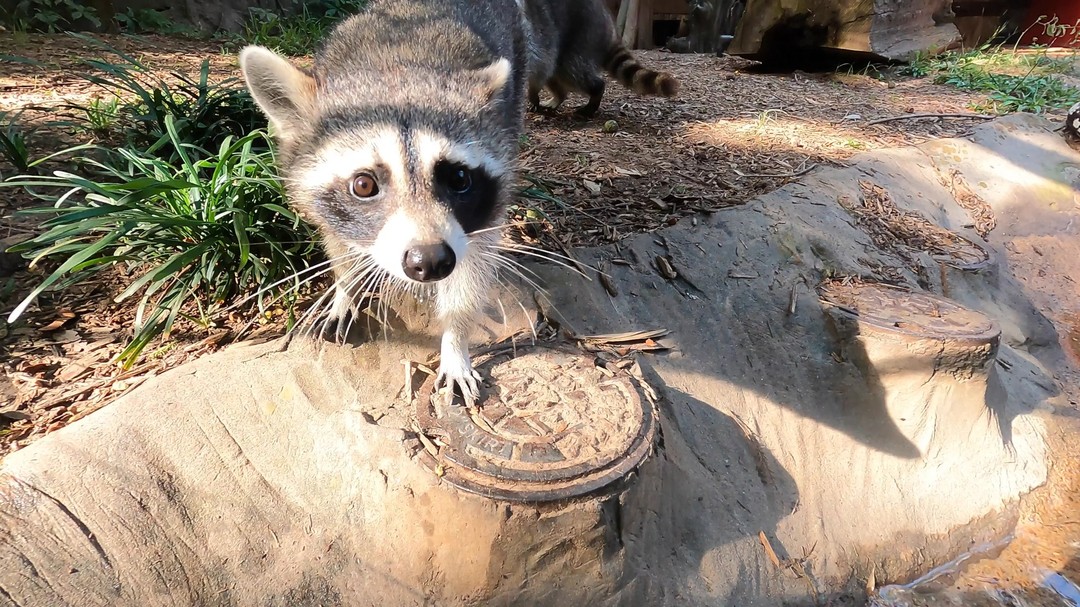- The Fascinating World of Rascal & Ranger the Raccoons: An Overview
- The Behavior and Biology of Raccoons: A Closer Look at Rascal & Ranger
- The Role of Rascal & Ranger in Wildlife Conservation Efforts
- Social Media’s Influence on Wildlife Awareness: The Impact of Rascal & Ranger
Rascal & Ranger the raccoons have captivated many people through their online presence and fascinating behaviors. These charismatic animals have garnered significant attention on social media platforms, driving interest in raccoon behavior, their role in ecosystems, and the broader implications for wildlife conservation. Below, we explore these themes in detail to highlight the educational and conservational importance of the popular raccoon duo.
The Fascinating World of Rascal & Ranger the Raccoons: An Overview
Rascal & Ranger are internet-famous raccoons celebrated for their amusing antics and endearing personalities. Not merely pets or sidekicks, these raccoons have become ambassadors for their species, creating a valuable bridge between the public and wildlife conservation efforts. Their journey through diverse habitats and interactions with various objects has provided unique insights into the lives of raccoons, their adaptive behaviors, and their interaction with human environments.
Understanding the behavioral patterns of Rascal & Ranger allows viewers to appreciate the complexity and intelligence inherent in these animals. Known for their highly developed tactile senses and problem-solving skills, raccoons like Rascal & Ranger can navigate through urban and wild landscapes with ease. They are omnivorous and highly opportunistic, traits that have enabled them to thrive in many types of environments, from forests to urban areas.
The Behavior and Biology of Raccoons: A Closer Look at Rascal & Ranger
Raccoons belong to the Procyonidae family and exhibit various behaviors that reflect their adaptability and intelligence. Rascal & Ranger, in particular, demonstrate behaviors such as foraging, climbing, and a high degree of manual dexterity. By watching their movements and interactions, one can observe the raccoon’s short legs and nimble fingers, perfectly designed for manipulating objects and searching for food.
Raccoons have a distinctive black mask around their eyes, which is not just for aesthetic appeal but also serves a functional purpose. Studies have indicated that the mask may help reduce glare and enhance their night vision, crucial for these primarily nocturnal creatures. Additionally, their dense fur protects against various environmental conditions, allowing them to remain active throughout different seasons.
Dietarily, raccoons are omnivorous and have a diverse palate that includes insects, small mammals, fruits, nuts, and human food scraps. Rascal & Ranger’s diet reflects this versatility, as they are often seen exploring various food items provided by their caretakers or found within their environment. This dietary adaptability is one reason raccoons thrive in urban and rural areas, where food sources can vary dramatically.
The Role of Rascal & Ranger in Wildlife Conservation Efforts
Rascal & Ranger are more than just social media stars; they play a pivotal role in raising awareness about wildlife conservation. By showcasing their everyday activities and natural behaviors, they encourage a deeper appreciation for raccoons and other wildlife. Education through entertainment is a powerful tool, and Rascal & Ranger’s presence has inspired many to learn more about raccoons and the importance of biodiversity.
Wildlife conservation efforts often focus on protecting habitats, promoting sustainable practices, and fostering coexistence between humans and animals. Rascal & Ranger illustrate how raccoons coexist within human-impacted environments and the challenges they face, such as habitat destruction and food scarcity. Highlighting these issues can lead to better conservation policies and more responsible human behaviors toward wildlife.
Moreover, the fame of Rascal & Ranger can be leveraged to support conservation initiatives. By partnering with wildlife foundations and educational institutions, they can help fundraise and spread crucial messages about the importance of preserving natural habitats and protecting raccoon populations from threats such as road traffic and pollution.
Social Media’s Influence on Wildlife Awareness: The Impact of Rascal & Ranger
In today’s digital age, social media has become a powerful platform for spreading awareness about wildlife and conservation. Rascal & Ranger the raccoons have effectively utilized this medium to reach a broad audience. The widespread sharing of their videos and images has captivated audiences, making the topic of raccoon conservation more accessible and engaging to the public.
The impact of such social media exposure is multifaceted. First, it humanizes raccoons, transforming them from misunderstood creatures often seen as pests into endearing and intelligent animals worth protecting. This shift in perception can lead to greater public support for conservation measures and wildlife-friendly policies.
Furthermore, by reaching millions of viewers, Rascal & Ranger brings attention to the broader issues affecting wildlife populations globally. The interactive nature of social media allows for real-time engagement and education, wherein followers can ask questions, share experiences, and learn directly from experts about how to coexist with wildlife responsibly.
In conclusion, Rascal & Ranger the raccoons serve as compelling examples of how wildlife can be brought closer to the public through the power of storytelling and social media. Their behaviors shed light on the adaptability and intelligence of raccoons, while their online presence advocates for wildlife conservation and responsible coexistence with nature. Through their engaging antics and the educational value they provide, Rascal & Ranger continue to inspire and educate, underscoring the significance of preserving the natural world.
*****
Source Description
Rascal & Ranger the raccoons

